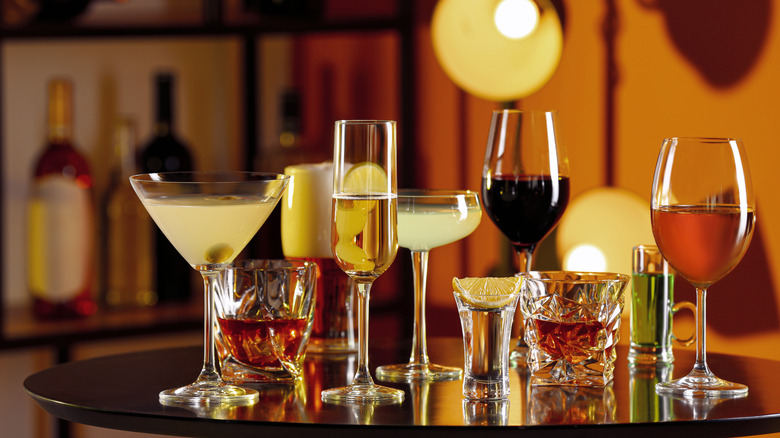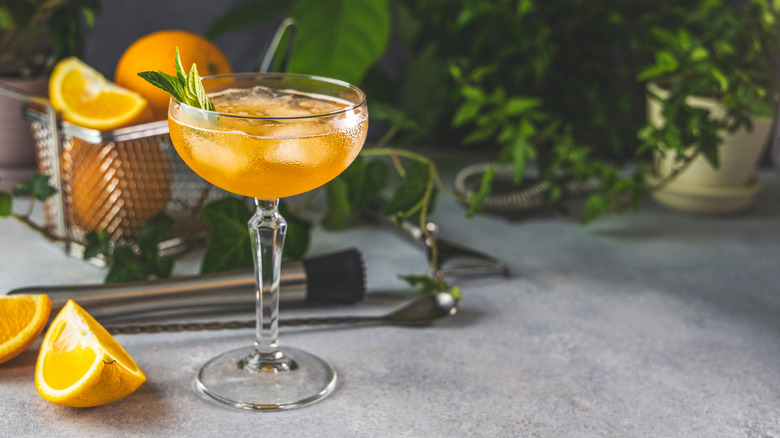What's The Difference Between Coupe And Martini Glasses?
Have you ever wondered why cocktails all seem to have their own glassware? Depending on the order, a single tray of drinks at a nice cocktail bar might include four or five different drinking vessels. It seems like a lot of work and care to keep that much glass on hand, but it is done for good reason.
The two main qualities that inform which drink goes in which glass are. Whenever you drink a well-made cocktail, the first sense that will experience that drink is your sense of smell. As the drink comes to your lips, the evaporating alcohol will reach your olfactory senses and can influence the way you taste that drink.
It's why negronis are always finished with an addition of orange. Those fragrant oils help bring out similar notes in the drink and enhance its flavor. The opposite is true when you put a whiskey drink into a glass with a narrow opening. The first thing you'll smell is the harsh burn of alcohol, which will negatively impact how you perceive your drink. That's why whiskey-tasting glasses are shaped like tulips. It directs those negative scents away so you can concentrate on the delicious aromas of vanilla and caramel.
Two glasses that might get confused are the coupe and martini glasses. Both have similar shapes and uses but have a few slight differences.
Coupe glass
The coupe is a stemmed drinking vessel with a rounded bowl-like shape that rises into high straight walls. This glassware was allegedly designed in the 17th century as a champagne drinking glass and is still used in this manner today, but it doesn't stand up to a proper champagne flute. Its wide mouth gives away too much of the sparkling wine's carbonation, but that same wide mouth makes it ideally suited for opening up aromatic cocktails with a slight swirl.
The stem of the coupe glass also makes them the preferred vessel for drinks served up or without ice. This includes drinks like the classic rye Manhattan and (probably most famously) the martini. These drinks are first chilled by stirring or shaking them with ice and then served on their own. It gives them a clean presentation but makes it harder to keep them cooled adequately in a rocks glass. The warmth of a hand is enough to take the chill out of these drinks, which is why they're preferred in a stemmed glass.
Martini glass
The martini glass is a far more recent invention. It was first publicly debuted in 1925 as the more modern take on the coupe. Its signature V-shaped (or Y shaped if you count the stem) silhouette makes it instantly recognizable. As public figures of suave and elegance like James Bond made vodka martinis more popular, the glass became a part of that status symbol.
The main difference between these two glasses is their shape. The steep, angular walls of the martini glass make it a much easier vessel. Just a slight tip of the glass is enough to take a proper sip. That also means it's far easier for a server to spill, which debunks the martini glass scam.
Another big difference is the size of the drinks. Martini glasses hold an average of eight ounces of liquid but can go even bigger. Coupe glasses, on the other hand, are about five and a half ounces making them the lighter of the two vessels.


